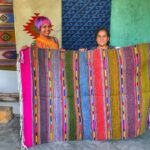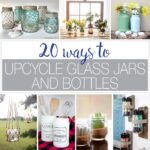I. Understanding the Basics of Wool Felting
II. Step-by-Step Process for Upcycling a Wool Sweater
III. Creative Ideas for Your Upcycled Wool Projects
Understanding the Basics of Wool Felting
Welcome to the delightful world of wool felting! If you’re curious about this cozy craft, you’re in for a treat. Wool felting is a creative and eco-friendly way to transform ordinary wool fibers into unique, textured pieces. Let’s dive into the basics so you can get started on your felting journey!
What is Wool Felting?
At its core, wool felting is the process of matting and compressing wool fibers together to create a solid fabric. This magic happens through a combination of heat, moisture, and agitation. When you apply these elements, the scales on the wool fibers open up and latch onto each other, forming a dense and sturdy material. It’s like a little science experiment meets art project!
The Types of Wool You Can Use
Not all wool is created equal, and choosing the right type is key to successful felting. Here are a few popular options:
- Merino Wool: Soft and fine, perfect for delicate projects.
- Corriedale Wool: A medium wool that’s versatile and great for beginners.
- Romney Wool: Coarse and easy to felt, ideal for sturdy items.
When shopping for wool, look for natural fibers labeled as “100% wool.” This ensures that your felting project will turn out just right!
Tools and Supplies for Felting
Before you get started, you’ll need a few essential tools and supplies:
- Wool: Choose your desired type and color.
- Soap: A gentle soap helps with the felting process.
- Warm Water: This activates the felting process.
- Agitation Tools: Hands, bubble wrap, or a felting mat work wonders!
- Felting Needle (optional): For detailed work and shaping.
Having these items on hand will make your felting experience smooth and enjoyable!
The Felting Process
Now that you have your supplies, let’s talk about how to felt. The process is simple, yet magical:
- Prepare Your Wool: Tear or cut your wool into small pieces.
- Add Soap and Water: Wet your wool with warm, soapy water.
- Agitate: Gently rub or roll the wool between your hands or against a textured surface.
- Rinse and Shape: Once felted, rinse the wool and shape it as desired.
With some practice, you’ll be a wool felting pro in no time!
Why Choose Wool Felting?
Wool felting is not just a fun craft; it’s also incredibly rewarding. It encourages creativity, reduces waste (especially when upcycling old wool sweaters!), and you get to create beautiful, functional items. Plus, there’s something so comforting about working with wool, don’t you think?
So, grab some wool, get your hands a little messy, and let your imagination run wild with the endless possibilities of wool felting!
Step-by-Step Process for Upcycling a Wool Sweater
Hey there, fellow DIY enthusiast! So, you’ve got a wool sweater that’s seen better days, and you’re wondering what to do with it. Well, you’re in luck because upcycling wool sweaters is not only a sustainable choice but also a fun and creative project. Let’s roll up our sleeves and dive into the step-by-step process of transforming that old sweater into something fabulous!
Step 1: Gather Your Supplies
Before we jump into the upcycling magic, let’s gather everything you’ll need:
- Old wool sweater
- Sharp scissors
- Measuring tape
- Needle and thread (or a sewing machine)
- Fabric glue (optional)
- Iron (for smoothing out the fabric)
- Your creative ideas and inspiration!
Step 2: Choose Your Project
Now that you have your supplies, it’s time to decide what you want to make. Some popular options include:
- Wool mittens or gloves
- Cozy hats or beanies
- Pouches or bags
- Wool cushion covers
- Decorative ornaments
Take a moment to browse some online tutorials or Pinterest boards to get your creative juices flowing!
Step 3: Prepare the Sweater
Next up is prepping your sweater. Start by giving it a good wash to ensure it’s clean. If the fabric is a bit fuzzy or pilled, don’t worry! A fabric shaver can help tidy it up. Once it’s dry, lay the sweater flat on a clean surface and give it a quick iron to smooth out any wrinkles.
Step 4: Cut It Up
With your sweater ready, it’s time to start cutting! Measure the sections you need for your chosen project. For example, if you’re making mittens, you’ll want to cut out two pieces for each hand. Don’t forget to leave an extra half-inch around the edges for sewing. Pro tip: It’s always better to cut a little extra than to end up short!
Step 5: Sew It Together
Now comes the fun part—putting everything together! Depending on your project, you’ll either sew the pieces by hand or use a sewing machine. If you’re not comfortable sewing, fabric glue can work wonders too. Just make sure to follow the instructions on the glue to ensure a strong bond.
Step 6: Final Touches
After you’ve sewn or glued your pieces, it’s time for some finishing touches. Give everything a quick iron to smooth out any seams. You can also add embellishments like buttons, embroidery, or patches to personalize your creation. The sky’s the limit here!
Step 7: Show Off Your Creation
Finally, the moment you’ve been waiting for—showing off your masterpiece! Whether it’s a chic pair of mittens or a cute pouch, take a moment to appreciate your handiwork. You’ve not only saved a sweater from the landfill but also created something unique and beautiful!
So, what are you waiting for? Grab that old wool sweater and let your creativity shine!
Creative Ideas for Your Upcycled Wool Projects
So, you’ve upcycled those old wool sweaters into felted masterpieces, and now you’re probably wondering what to do next! The good news is that felted wool is incredibly versatile, and there are countless ways to showcase your newfound crafting skills. Let’s dive into some fun and creative ideas for your upcycled wool projects!
1. Cozy Accessories
Who doesn’t love a warm accessory? Upcycled wool can be transformed into a variety of cozy items:
- Scarves: Cut and seam your felted wool into trendy scarves. You can mix and match colors, or even add embellishments like embroidery for a personal touch.
- Hats: Felted wool makes for some seriously cozy hats. Try creating beanies or berets, adding a pom-pom or a decorative band for flair.
- Gloves and Mittens: Keep your hands warm with matching gloves or mittens. They’re not only practical but can also be a great conversation starter!
2. Home Décor Delights
Your home deserves a touch of warmth and character, and felted wool can do just that. Here are some ideas:
- Pillows: Create custom pillow covers from your felted wool. They can add a pop of color to your couch and are also soft and comfy!
- Wall Art: Get creative with wall hangings. You can create felted tapestries or even framed pieces by cutting shapes from your felted wool and arranging them on a canvas.
- Coasters: Make practical coasters that are not only functional but also beautiful. The thickness of felted wool works well to absorb moisture from drinks.
3. Fun for Kids
Kids love crafts, and upcycled wool is perfect for some playful projects:
- Stuffed Animals: Use your felted wool to create adorable stuffed animals. This can be a delightful gift for a child or a lovely keepsake.
- Footwear: Try your hand at making slippers! Felted wool makes for warm and comfy footwear that kids will love.
- Creative Play Sets: You can make a simple dollhouse or puppet theater. Use the felted wool to create furniture or characters for imaginative play.
4. Eco-Friendly Gift Ideas
Handmade gifts are always appreciated, and upcycled wool can help you create thoughtful presents:
- Gift Bags: Ditch the plastic! Create reusable gift bags from your felted wool. They look stylish and are perfect for any occasion.
- Keychains: Small but mighty! Make cute keychains or bag charms by cutting out shapes from felted wool. Add a ring or clip, and you have a lovely handmade gift.
- Bookmarks: Cut pieces of felted wool into bookmark shapes. They’re simple, practical, and perfect for the bookworm in your life.
With these creative ideas, your upcycled wool projects can shine in many ways! Feel free to mix and match styles, experiment with colors, and most importantly, have fun. Let your creativity flow and enjoy the process of making something beautiful and unique!





Comments